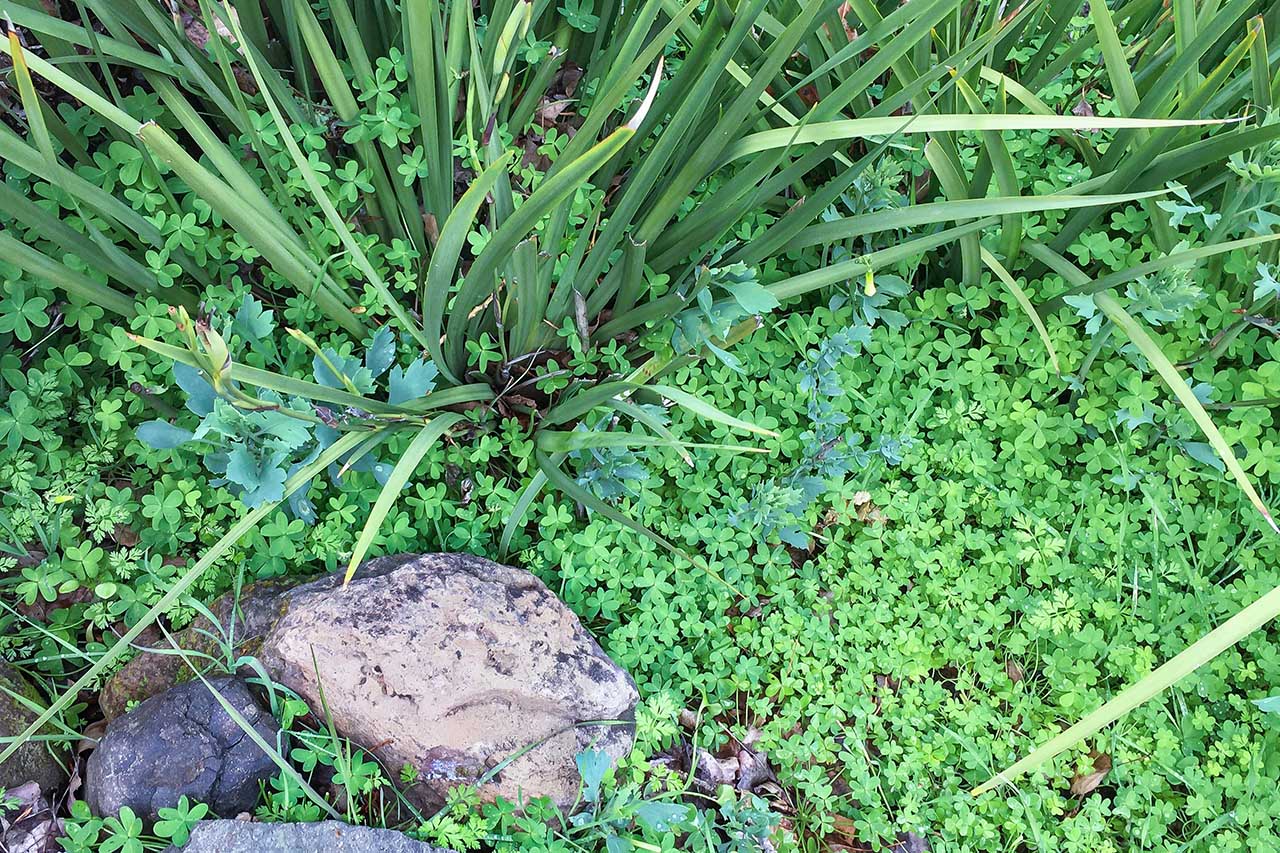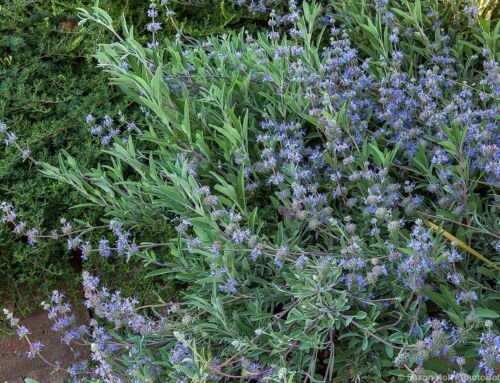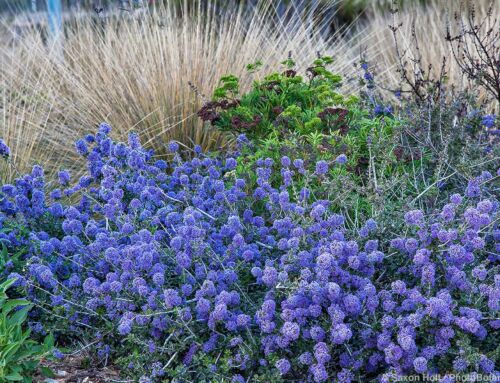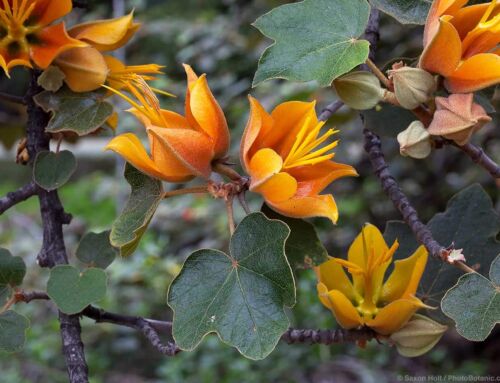Where winters are wet, summers are dry, and soils consist of any appreciable amount of clay, the difference between too wet and too dry to weed is barely perceptible.
In some years there may be only a few days when the soil is dry enough to walk on without compaction, when weeds come out of the ground without resistance, and when the earliest weeds have yet to set seed. If you miss those days, well, I guess there’s always next year.

Invasive oxalis (Oxalis pes-caprae) and advancing Matilija poppies (Romneya coulteri) mix inextricably with fortnight lily (Dietes grandiflora) in an area of my garden given over to weeds and aggressive spreaders
In my northern California garden weeds start to show up soon after the first substantial rains in late fall or early winter, about the same time that the distant hills begin to change from tawny brown to green. Even in dry years such as this one has been, weeds come up in February, and by mid- to late March a few have even gone to seed.
The on-and-off winter rains followed by sunny, dry days make it challenging to plan for weeding. In a wet year in my part of the world, winter rains may continue fairly regularly for days or weeks, but the weeds don’t care. Despite water sheeting across saturated soils, they continue to push up through the soggy muck.
Once the rains stop, surface soils may quickly dry out on warm, windy days that follow, but the moisture-retaining quality of clay means that deeper layers are still prone to compaction. By the time soils are dry enough to walk on without damage, it rains again. The oft-heard advice to pull weeds as soon as you spot them just doesn’t apply here.
If you check soils regularly you may catch those few days when some of the toughest weeds come easily out of the ground. Scotch broom (Cytisus scoparius), even at two or three feet tall, can be readily pulled when soil moisture is just right, and vinca (Vinca major) can be dislodged without leaving its roots behind. The same is true for many weedy annual grasses and tap-rooted perennials. Prime time for pulling, however, may differ for different weeds. You pull the ones you can and come back for the recalcitrants.
Oxalis (Oxalis pes-caprae), of course, is a different story. It’s a weed that you cannot contain unless you continuously remove it from areas where it has not yet spread. Once it even begins to take over, which it does with astonishing speed, there seems to be no way to control it. My approach has been to establish a kind of Maginot line on my side of which I vow to take a stand.
Six to twelve inches of aged wood chips can discourage most weeds or at least make weeding much easier, but this approach is useful primarily in areas to be newly planted. Wood chips must be reapplied as needed to maintain depth since shallow mulches may only encourage the growth of weeds, especially the dreaded oxalis.
Addendum, April 1: When, in mid-March, I bemoaned to Saxon that it was almost too dry to weed he seemed surprised. “No, it’s not,” he said, “I weeded all weekend.” We quickly figured out that his garden is watered, especially in dry winters, and mine, for the most part, is not.
Most of my springtime weeding is focused on what George Waters, longtime editor of Pacific Horticulture magazine, called my “woodlot,” which I always assumed was a not entirely complimentary Englishism for unruly weed patch with trees. I weed my hand-watered perennial beds and pots year-round as these are not affected by the vagaries of weather.





Is there a resource guide for California ?
A resource guide for what? Can you elaborate?
I chose my fights when l thinning weeds. I find oxalis rather attractive and blend well as a ground cover between my native shrubs-chose your battle.
Same for scarlet pimpernel . There is another ground cover weed I have yet to identify that spills over and around the small rocks bordering my flagstone path. I pull others selectively
That’s really all you can do if you weed by hand, isn’t it. I pull oxalis only where it has yet to take over, and I leave the dandelions because they are so cheerful. Mugwort is kind of weedy too, but it smells so good and it’s native here. I must admit I don’t know the names of most of my weeds. I look them up only if I want to keep them. Thanks for visiting us, Dennis. Come back again!
Nora